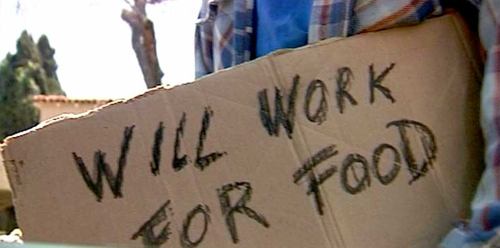Food Insecurity a Nationwide Threat, Study Finds

According to Feeding America's Map the Meal Gap study, over 1000 American counties have at least one in four “food-insecure” children. The findings coincide with summer recess for the nation's schools – a time of increased pressure on low-income families and food banks to fill the school lunch program void.
Food insecurity is a phrase used by the U.S. Department of Agriculture to describe lack of consistent access to adequate amounts of food for an active, healthy life and limited or uncertain availability of nutritionally adequate foods.
No place is childhood food insecurity more prevalent than in Arizona and Oregon, tied as the nation's worst scoring states on the study's meal gap index. More than 29 percent, or 466,000, Arizona children, were found to be food-insecure in 2010 according to Feeding America -- the nation's largest hunger-relief organization. In Texas, more than one in four children were at a heightened risk for hunger in 2010.
“All over Texas there are local faith groups, nonprofits, small businesses and individuals who want to feed Texas kids. ... Lawmakers should (be) building networks, removing roadblocks, bringing everyone to the table,” said Bee Morehead of the interfaith group Texas Impact, according to My San Antonio.
Despite government red tape, the national childhood food-insecurity rate in 2010 was 21.6 percent, down from 23.2 percent in 2009. This was perhaps due less to an improving economy and more to increased participation in the SNAP (formerly food stamp) program.
The study notes, however, that 29 percent of food-insecure people do not qualify for SNAP benefits.
Among the study findings was that child food insecurity is more pervasive in rural areas. Over 60 percent of counties with high child food insecurity are considered rural, according to the Feeding America report. It also found that counties with majority Latino populations are disproportionately represented among the top 10 percent of counties where food insecurity is the highest. Latinos are more than twice as likely to be at risk of hunger than white, non-Hispanics.
Vicki Escarra, president and CEO of Feeding America explained the county-specific approach of the study in a recent press release:
"In order to meet the needs of children who are food insecure, we need to look at the communities in which they live. For example, if we find that there are significant numbers of children in a particular county who are entitled to be enrolled in child nutrition programs, but are not, our priority should be to increase enrollment."On the other hand, we also need to know if there are a number of families whose household income is too high, or who have too many financial assets, to qualify for these programs. If the only way to get additional food to them is through charities, such as the agencies served by our food banks, then we know we need to make that our priority."
Feeding America serves nearly 6 million people each week through its nationwide network of 202 food banks that service about 61,000 food pantries, shelters and soup kitchens.




